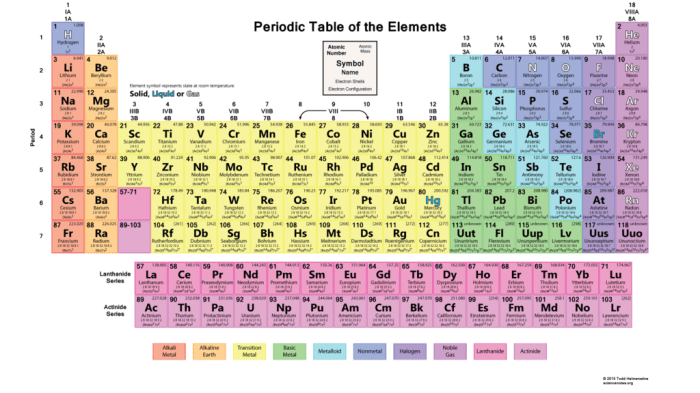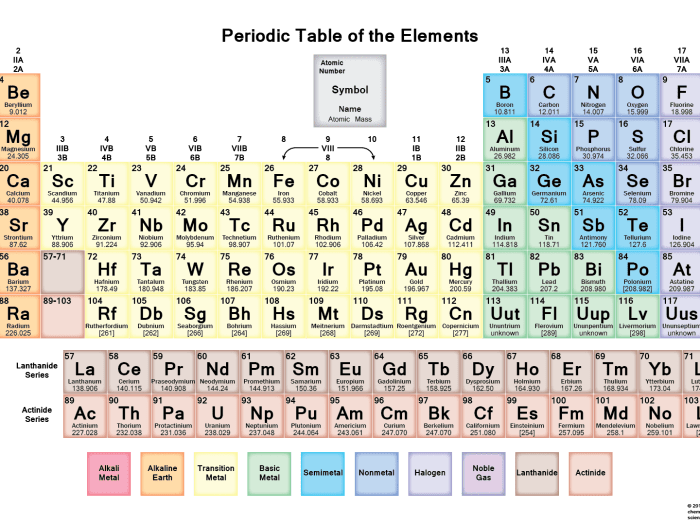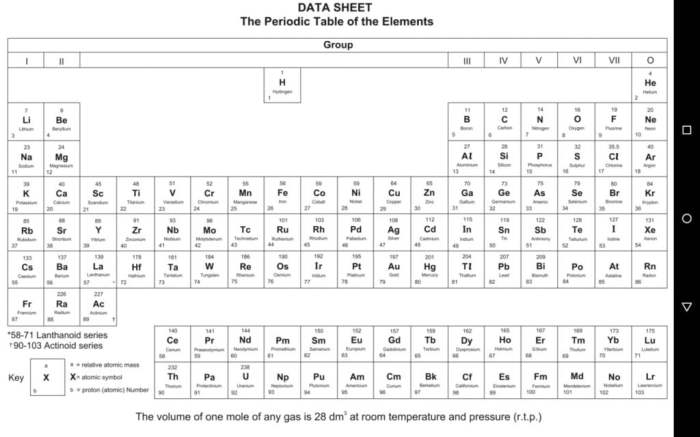Experiment 11 pre laboratory assignment periodic table and periodic law – Experiment 11 Pre-Laboratory Assignment: Periodic Table and Periodic Law invites us to delve into the fascinating realm of chemistry, where we unravel the mysteries of the periodic table and explore its profound implications. This pre-laboratory assignment lays the groundwork for a captivating experimental journey that will illuminate the fundamental principles governing the behavior of elements.
The periodic table, a cornerstone of chemistry, is a tabular arrangement of elements organized based on their atomic number, electron configuration, and chemical properties. It serves as a roadmap to understanding the properties of elements and predicting their reactivity. This assignment delves into the historical evolution of the periodic table, highlighting the contributions of pioneering scientists who shaped our comprehension of the chemical world.
Periodic Table and Periodic Law: Experiment 11 Pre Laboratory Assignment Periodic Table And Periodic Law

The periodic table is a tabular arrangement of chemical elements organized based on their atomic number, electron configuration, and recurring chemical properties. It provides a systematic framework for understanding the behavior of elements and predicting their properties.
Organization of the Periodic Table
- Atomic Number:The number of protons in an atom determines its atomic number and its position on the periodic table.
- Electron Configuration:The arrangement of electrons in an atom’s orbitals determines its chemical properties.
- Chemical Properties:Elements within the same group or period exhibit similar chemical properties due to the arrangement of their valence electrons.
Periodic Trends
- Atomic Radii:Atomic radii generally increase down a group and decrease across a period due to the increasing number of electron shells and the decreasing effective nuclear charge.
- Ionization Energy:The ionization energy, which is the energy required to remove an electron from an atom, generally increases across a period and decreases down a group.
- Electronegativity:Electronegativity, which is the ability of an atom to attract electrons, generally increases across a period and decreases down a group.
Experiment 11: Pre-Laboratory Assignment

Experiment 11 aims to investigate the periodic trends in atomic radius, ionization energy, and electronegativity.
Materials and Equipment
- Periodic table
- Calculator
- Data table
Safety Precautions
- Wear safety glasses and gloves during the experiment.
- Do not touch any electrical equipment with wet hands.
- Handle chemicals with care and follow the instructions provided.
Data Analysis and Interpretation

Data Table
Create a data table to organize the following experimental data:
- Atomic number
- Element symbol
- Atomic radius (pm)
- Ionization energy (kJ/mol)
- Electronegativity
Calculations
- Atomic Radius:Determine the atomic radius using the equation r = k – n 2, where r is the atomic radius, k is a constant, and n is the principal quantum number.
- Ionization Energy:Obtain the ionization energy from the periodic table or a reliable data source.
- Electronegativity:Calculate the electronegativity using the equation χ = (IE + EA) / 2, where χ is the electronegativity, IE is the ionization energy, and EA is the electron affinity.
Sources of Error
- Experimental error:Inaccuracies in measurements or equipment can affect the results.
- Human error:Mistakes in data recording or calculations can introduce errors.
- Assumptions:The calculations assume ideal conditions and may not account for all factors that influence the properties of elements.
To minimize errors, it is crucial to follow the experimental procedure carefully, use calibrated equipment, and double-check calculations.
Applications of the Periodic Table

The periodic table is a valuable tool in various fields:
Predicting Properties of Elements
The periodic table allows us to predict the properties of elements based on their position within the table. For instance, elements in the same group typically have similar chemical reactivity.
Designing New Materials and Compounds, Experiment 11 pre laboratory assignment periodic table and periodic law
By understanding the periodic trends, scientists can design new materials with tailored properties. For example, the discovery of superconductors and semiconductors was facilitated by the periodic table.
Understanding Chemical Reactions and Bonding
The periodic table helps explain the behavior of elements in chemical reactions. It provides insights into the formation and stability of chemical bonds, enabling us to understand and predict chemical processes.
Essential Questionnaire
What is the purpose of Experiment 11 Pre-Laboratory Assignment?
Experiment 11 Pre-Laboratory Assignment aims to provide students with a foundational understanding of the periodic table and periodic law, enabling them to predict the properties of elements and explore their applications.
What are the key concepts covered in this assignment?
This assignment covers the historical development of the periodic table, the organization of elements based on atomic number and electron configuration, periodic trends in atomic properties, and the applications of the periodic table in predicting element properties and chemical reactions.
How does this assignment prepare students for the laboratory experiment?
By completing this pre-laboratory assignment, students gain a comprehensive theoretical understanding of the periodic table and periodic law, which is essential for successfully conducting the laboratory experiment and interpreting the experimental results.